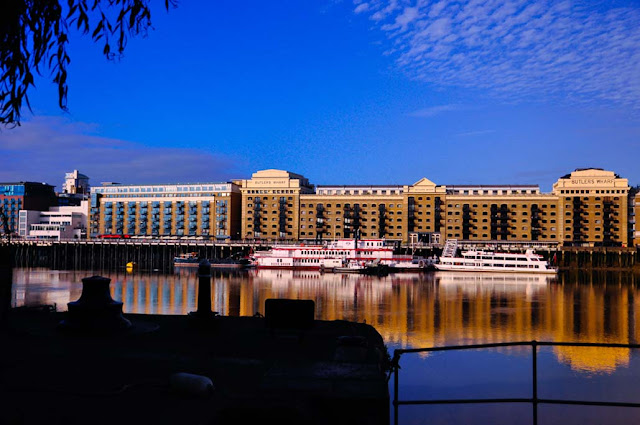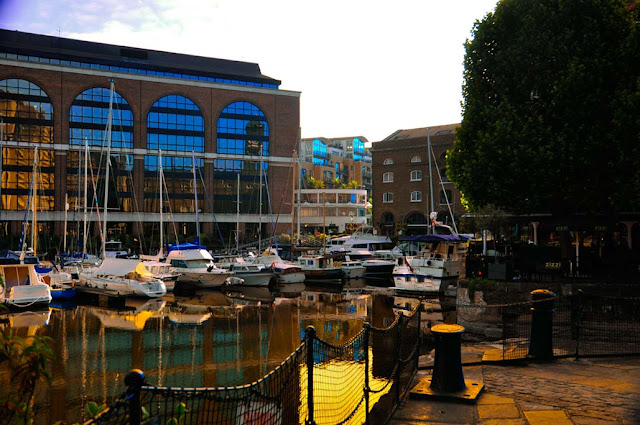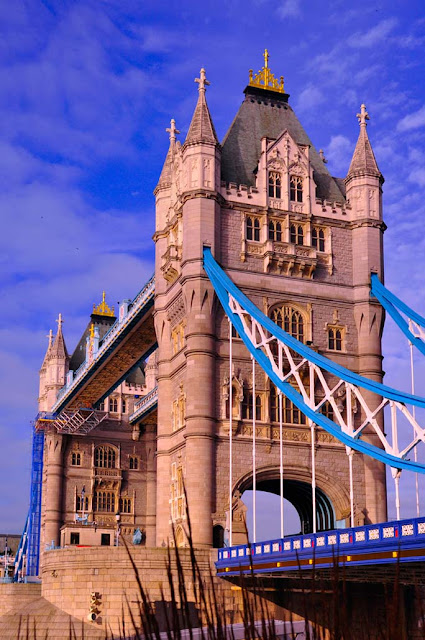Tower Hamlets, London, England...
 |
| View along Wapping High Street |
 |
| View along the Thames |
 |
| Inner Harbor facing East |
 |
| Inner Harbor, facing west |
 |
| London Bridge |
 |
| Statue along the Thames |
As I’ve mentioned before, polarizers do things digital filters can’t, because they act upon the light before it’s captured by the camera. In the case of the Cokin P173, there are two polarizers at work; The first filters out the blues in one plane of light, and the second filters out the yellows in the plane of light that is 90° out of phase with the first. The result is the ability to selectively split these two planes of light into blues and yellows, two complementary colors which are particularly easy to work with. Simply put, you can intensify a blue sky while warming a building in the foreground.
The effect differs with the rotation of the filter, and its orientation with the light source, just like any other polarizer. A standard polarizer is most effective when pointed at a 90° angle to the light source, and the P173 is no different. However, regardless of the camera’s orientation with the main light source, individual items will take on a different color depending on their orientation with the light source. So the effect is more apparent than with a standard polarizer.
For example, in the photo of the Inner Harbor facing east above, you’ll notice that the sky is neutral. However, the sky’s reflection in the building’s windows (vertical plane) is blue, while the sky’s reflection in the water (horizontal plane) is yellow. In the case of the statue, the curved surfaces are no longer a single color, but divided into rich blues and warm browns.
The effects are somewhat unpredictable, and unique to every image, providing a vast venue for experimentation. There are many techniques to be learned in using this filter. Here are some of my initial observations:
There appears to be an optimal angle of rotation, in which the greatest separation of blues and yellows occur. When I find it, the image simply comes alive. In my opinion, this yields the most striking image, even if the overall color balance isn’t to my immediate liking.
When the filter is not acting upon different planes of light, it appears to have a somewhat pale mauve cast, not unlike the pinkish cast of a skylight filter, which imparts a somewhat magenta color cast.
There are several ways of neutralizing this cast. (1) You can white balance through the filter while using a diffuser to assure that the light does not come from any single plane. (2) You can balance normally and shoot in RAW, adjusting the white balance later on in post. (3) You can use the rotation of the filter itself to balance to neutral elements within the scene. (4) You can use auto white balance (something I normally never recommend, although in this case it can prove to be an advantage.)
Overexposure can quickly diminish the effects of this filter, so lean to the dark side.
The particular hue of the resulting blues and yellows may not be to your immediate liking. However, purple skies and yellow-green buildings can easily be fixed with the many selective color tools available.
The Cokin Varicolor series filters are also available in red/blue, red/green and pink/orange color combinations, although the blue/yellow seems to be the most popular and useful. I discovered this when I attempted to order it; it was backordered from Cokin, and I had to wait several weeks. However, it arrived just before my trip to England, and was well worth the wait.

No comments:
Post a Comment